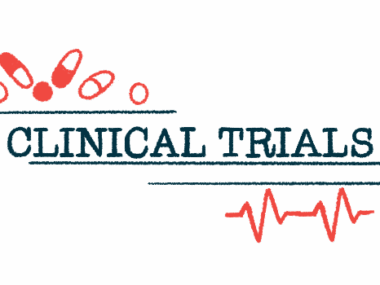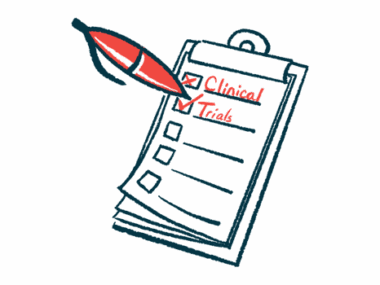ADX-097, potential AAV therapy, fares well in healthy volunteers
Q32 Bio's tissue-targeted treatment was well tolerated in Phase 1 trial
Written by |

ADX-097, an experimental tissue-targeted therapy that Q32 Bio is developing for ANCA-associated vasculitis (AAV) and other diseases marked by overactivity of the immune complement system, was well tolerated in a Phase 1 clinical trial involving healthy volunteers.
The study’s data also indicated that ADX-097 showed a favorable pharmacological profile, according to the company, which will present full results from the trial in a poster at the American Society of Nephrology (ASN) Kidney Week 2024. That event will be held Oct. 24-27 in California.
The poster is titled “ADX-097, a Tissue-Targeted Complement Inhibitor for the Treatment of Kidney Diseases: Phase 1 Results in Healthy Participants and Model-Informed Phase 2 Dose Selection.”
“We look forward to presenting our promising clinical data … that supports the continued advancement of ADX-097, our novel tissue-targeted inhibitor of complement activation designed to inhibit complement in the diseased tissue and minimize systemic [whole-body] complement blockade,” Shelia Violette, PhD, Q32 Bio’s chief scientific officer, said in a company press release.
Q32 Bio previously announced its plans for a Phase 2 trial to assess the safety and efficacy of the therapy in individuals with AAV. An ongoing Phase 2 study (NCT06419205) is already testing ADX-097 in adults with several other complement-driven diseases that affect the kidneys.
“We remain focused on advancing our pipeline of programs targeting the immune system for the treatment of autoimmune and inflammatory diseases, including ADX-097 in two Phase 2 clinical trials,” said Jodie Morrison, Q32 Bio’s CEO.
Therapy for AAV, other diseases, targets immune complement system
The complement system, also called the complement cascade, refers to a group of immune proteins that are present in the blood and other bodily fluids. These proteins normally exist in an inactive state and are activated in a domino-like way by potential threats like infections.
However, excess activation of the complement cascade also plays a major role in driving AAV and other autoimmune diseases. As such, blocking complement activation is a key part of treatment for such conditions.
Several complement-blocking therapies are widely available, such as the approved AAV treatment Tavneos (avacopan). A major limitation of available therapies, however, is that they suppress the complement system throughout the entire body.
This means that, while potently reducing disease activity, these treatments may also stop the complement system’s normal ability to defend against threats, leaving patients vulnerable to infections.
ADX-097 is designed to block the complement cascade only in tissues where it is too active, and particularly where there are more deposits of a complement component called C3d. Meanwhile, it minimally blocks complement elsewhere in the body.
High-density C3d deposits are seen in several complement-associated kidney diseases. Because the kidneys are one of the organs hardest hit by AAV, the therapy could theoretically help control the disease with fewer safety issues than systemic complement suppressors, according to Q32 Bio.
“We believe ADX-097 has the potential to achieve relevant complement inhibition directly in the tissue while sparing systemic activity, with the goal of addressing limitations of the currently available systemic approaches, including infection risk and the need for high drug doses and frequent administration to achieve therapeutic levels of complement inhibition,” Violette said.
Trial data suggest a possible benefit of once-weekly ADX-097 doses
The Phase 1 trial was the first-in-human study of ADX-097. Healthy volunteers were given the therapy at various doses via subcutaneous, or under-the-skin, injections, or intravenously, meaning directly into the bloodstream. The main goals were to evaluate the therapy candidate’s safety and tolerability. The study also investigated its pharmacokinetics, or the therapy’s movement into, through, and out of the body, and its pharmacodynamics, or effects on the body.
The results showed that ADX-097 was overall well tolerated, with “no clinically significant drug-related safety findings” or antibodies against the therapy at any tested dose, the researchers wrote in the poster’s abstract.
These first-in-human data for ADX-097 that we will share at Kidney Week demonstrate the potential of our novel and differentiated approach to inhibiting [suppressing] the complement system, a validated biologic target.
Pharmacological data also were positive, suggesting that once-weekly subcutaneous injections of ADX-097 at a dose of 450 mg may result in target circulating therapy levels blocking the complement system in diseased tissues. At the same time, this dosage is estimated to allow levels of the drug elsewhere in the body to be about five times lower than those needed for systemic complement suppression.
“ADX-097 demonstrated a favorable safety profile and desired [pharmacological] properties in healthy participants, supporting a Phase 2 dose that is predicted to provide tissue inhibition of complement in [kidney] diseases while sparing systemic complement activity,” the researchers wrote.
According to Morrison, “these first-in-human data for ADX-097 that we will share at Kidney Week demonstrate the potential of our novel and differentiated approach to inhibiting [suppressing] the complement system, a validated biologic target.”







